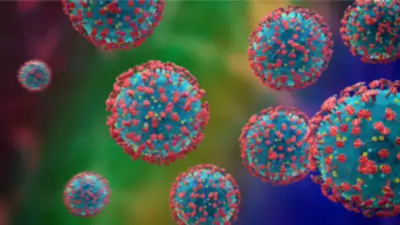What is HMPV?
The discovery of human metapneumovirus, or HMPV, goes back to 2000, when a group of Dutch scientists set out to find what caused acute respiratory infections in humans. They found an unknown pathogen.
By 2001, the Dutch scientists had sequenced the metapneumovirus using a complex mix of specialised culture and molecular techniques. But, later, serological studies (analysis of blood serum) of 28 children threw up something more interesting — the virus had been in circulation in the Netherlands since 1958. And it had spiked before. In fact, in the first months of 2023, the US recorded a spurt in HMPV detections.
Should you be worried?
Dr Rajesh Karyakarte, a professor of microbiology at BJ Medical College in Pune, said: “Our bodies have adapted to their (virus’s) presence over time. In most cases, infections for all viruses remain asymptomatic or mild, but for some individuals — especially those with underlying medical conditions — they can lead to severe illness and hospitalisation. This was true for Covid-19, and it’s also true for HMPV. But unlike Covid-19, HMPV has been around for a long time and there is no evidence to suggest that it is spreading in India at a faster speed than before.”
Senior expert Dr GC Khilnani, too, noted that “the virus poses significant risk to immunocompromised individuals and older adults”. Khilnani is a member of the WHO technical advisory group on global air pollution and health, and chairman of PSRI Institute of pulmonary critical care and sleep medicine.
Dr Sandeep Budhiraja of Max Healthcare explained that HMPV elderly individuals with existing health conditions like diabetes, heart disease or kidney failure have to be especially careful. While healthy adults experience mild symptoms, elderly patients may develop serious complications.
How does it spread?
What are the symptoms? HMPV spreads among humans via respiratory droplets. Incubation period is believed to be between 3 and 5 days, but can vary. According to the US CDC, there is currently no specific antiviral therapy to treat HMPV and there’s no vaccine against it either. Managing the illness involves supportive care.
The virus manifests as:
➤ Mild cases: Common cold-like symptoms
➤ Severe cases: Pneumonia or bronchopneumonia
How to test for HMPV?
Testing for HMPV often involves advanced methods like the BioFire panel that can detect multiple pathogens, including HMPV, in a single test. Many private labs in India conduct this test, but the cost runs into thousands of rupees.
It’s common in kids; few cases are acute
Experts said HMPV is more common in the paediatric population, predominately in children less than two years of age.
About 5% to 10% of paediatric patients may end up in hospital due to HMPV-triggered acute lower respiratory tract infections. On average, doctors say children less than 6 months old who contract HMPV infection are three times as likely to be hospitalised compared with those between 6 months and 5 years.
Why are we seeing cases now?
Dr Amitav Banerjee, former field epidemiologist in the Indian Armed Forces, said: “The recent surge in China is due to ‘immunity debt’, that is, the children born during the pandemic did not get exposed to the virus in the first few months of life due to restrictive non-pharmacological interventions. They are immune naive and vulnerable, giving rise to a large number of cases.”
Dr Karyakarte pointed out that the weather, too, has a role to play. “The mucus in our nasal passages, which serves as a protective barrier against pathogens, becomes less effective in cold, dry air. Reduced moisture in the mucus compromises this natural defence, making it easier for viruses to directly contact and infect nasal cells.”
It has been in India for years
A pioneering 2003 study by BJ Medical College and NIV-Pune confirmed HMPV in children in Pune. The study found a 19.2% positivity rate in 26 paediatric cases. Four of the five positive cases were infants under one year. There were both mild and severe infection patterns.
In a 2006 AIIMS study, 12% of children under five years with acute respiratory illness (ARI) tested positive for HMPV. Most of these cases occurred during winter months.
A 2013 NIV Pune study analysed 224 clinical samples and identified multiple HMPV strains (A2, B1, and B2 lineages). A2 and B2 were found to be predominant subtypes.
A 2014 Assam study found HMPV in 20 of 276 children (7.2%) under the age of 5 who had ARI symptoms. The study also noted that the highest prevalence of HMPV was detected in Jan (46.7%) followed by Dec (16.7%).
A 2024 ICMR study in Gorakhpur examined 100 paediatric patients with respiratory illness of whom 4% tested positive for HMPV. Among the positive cases, one fatality was reported.
What you can do
➤ Wash hands with soap and water for at least 20 seconds
➤ Avoid close contact with people who are sick
➤ Avoid touching your eyes, mouth and nose with unwashed hands
➤ Cover your mouth and nose while coughing or sneezing h Stay at home when sick
➤ Regularly clean surfaces such as doorknobs, tables, etc
Inputs from Anuja Jaiswal, Lata Mishra and Eshan K
The post Anxious about HMPV? Here’s all you need to know | India News appeared first on World Online.

